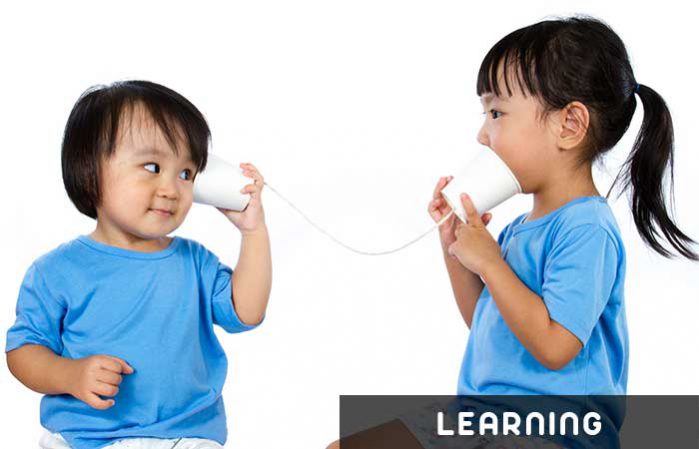
Listening is easy – we do it all the time – but listening to understand is a far more difficult skill, and one that is hardly ever taught. For younger children, it’s easier if we break down this concept into its two component skills: Listening, and then using empathy to understand.
Listening
If you are the parent of an impetuous younger child, you might often find yourself pleading with your child to listen. Maybe you say things like: “Turn on your listening ears!” or “Pay attention!”
Teaching a younger child to listen can be difficult – the world is so new and exciting, so it’s hard to get them to pay attention – but playing games can be an effective way to help them focus on what’s important.
One popular game that really teaches kids to listen is to play Simon Says. This teaches them to listen carefully (for the phrase “Simon says”) and to think before they act.
Another fun way to work on listening skills is to use music. Clap out a rhythm or sing a tune, and then have them repeat it back to you. Make the rhythms or melodies progressively complicated. Or sing campfire songs like I Had a Little Rooster, where each child can add to the lyrics, and everyone has to listen and remember.
Try to set a good example
Listening, as pointed out earlier, is far more than just hearing. Teach your child what active listening means. You can read all about it here, but to summarise, active listening means watching for non-verbal clues, showing the speaker you’ve heard him speak, and following up with relevant questions to show that you’ve understood.
These may not be intuitive skills to learn – in fact, many adults continue to struggle with being good active listeners. A great way to teach this is to model this behaviour as you communicate with your kids and your spouse – be compassionate to yourself, no one is perfect at this. Show your children that it’s okay to fail, and talk about how you could be doing it better.
Use empathy to facilitate understanding
Now comes the tricky part – working to understand what the speaker is saying. This means listening for the real meaning, and not just to hear the words that are being spoken. The key to doing so is to focus on eliciting an empathetic response in your children. This is a skill that really begins to develop only later on in childhood, as they become capable of understanding that other people have different perceptions and experiences.
As your children mature, teach them empathy by encouraging them to put themselves in other people’s shoes. Say things such as “Bobby fell off the swing. How do you think he feels?” or “Gosh, Bella stubbed her toe. That must have hurt!”.
Work on helping your child identify and name different feelings. This excellent book with plenty of charming illustrations of emotions can help your child learn all about the rainbow of feelings that we all have.
This article was first seen on goguru.com
This is part three of a 16-part series about Habits of Mind. Follow the series here.


